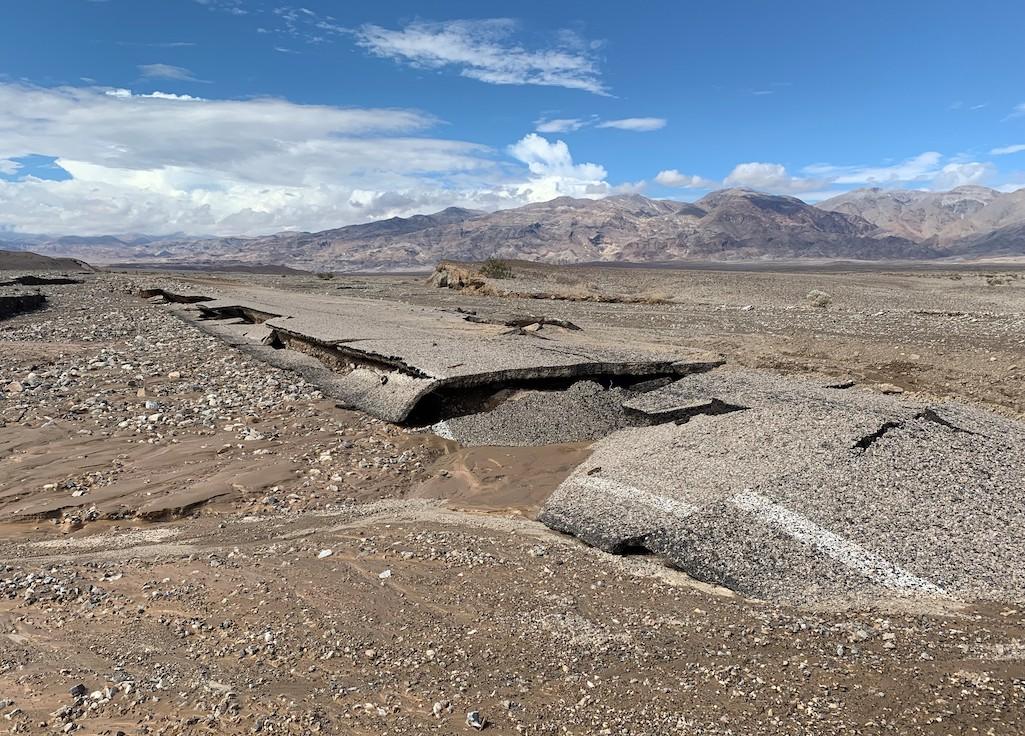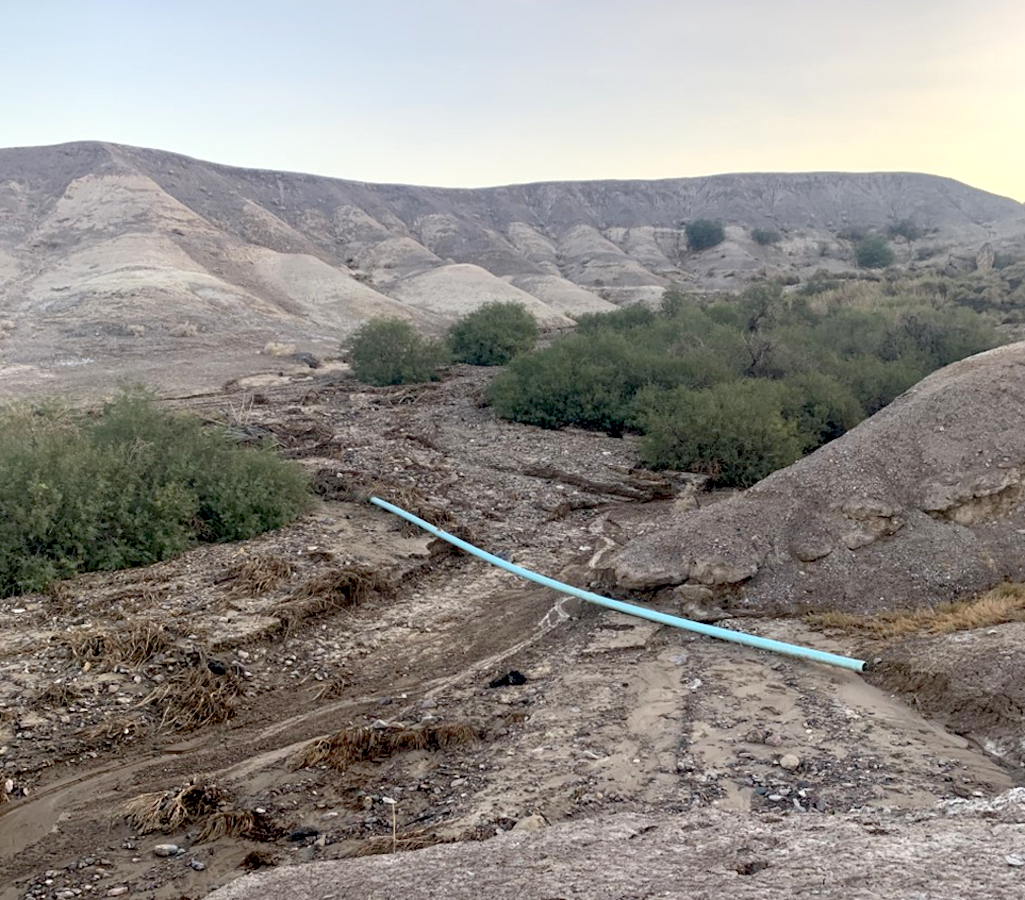
Remnants of the Beatty Cutoff Road, one of countless areas of severe road damage in Death Valley/NPS, M. Clark
A three-hour rainstorm that dumped nearly 1.5 inches of rain on Death Valley National Park, causing widespread flooding that tore up roads, blew out water systems, and shut down the park, has been classified as a 1,000-year event by the National Weather Service.
"The heavy rain that caused the devastating flooding at Death Valley was an extremely rare, 1,000-year event," Daniel Berc, meteorologist with the National Weather Service Las Vegas, said Sunday. “A 1,000-year event doesn't mean it happens once per 1000 years, rather that there is a 0.1 percent chance of occurring in any given year."
The storm on Friday caused major impacts across the park that straddles the California-Nevada border. A critical portion of the Cow Creek water system that serves some park residences as well as park facilities, including the Emergency Operations Building and maintenance yard, was heavily damaged, a park release said. More than 600 feet of the water main was blown out by flash floods.
Additionally, many miles of roadway are known to have moderate to severe asphalt damage, with hundreds of miles of roadways impacted by debris, the release added. Road conditions were still being assessed, as damage makes access to some areas impossible by vehicle.
On Saturday, a Naval Weapons Station China Lake helicopter crew was able to do a thorough aerial search and located several vehicles in remote areas of the park. Rangers were able to contact these visitors and ensure that everyone was OK.
The 1.46 inches of rain recorded at Furnace Creek is still preliminary data.

One of several 30 foot sections of water main that were washed away/NPS, R. Wissinger.
Monsoonal rains typically reach into the Southwest during the summer months, bringing much-needed moisture to the region. According to the weather service, the monsoon season runs from June 15 through September. In recent summers it has been been fairly muted -- the 2020 monsoon season was one of the driest on record, according to the service -- while this year's monsoons have generated significant flooding in places such as Death Valley and Mojave National Preserve, which also has recorded significant road damage from recent storms.
"The latest 3-month outlook shows an increased chance of July–September precipitation being above normal for parts of the Southwest, with the highest odds over southern Arizona," the weather service forecast earlier this summer.
The California Department of Transportation expects to reopen portions of Highway 190 in Death Valley by Tuesday, allowing for travel between Pahrump, Nevada, and the park’s residential and administrative area at Cow Creek. This will include access to the park’s visitor center at Furnace Creek, as well as the private hotels at Furnace Creek. Park roads are expected to remain closed for days to months, depending on the severity of damage.
To date, there have been no reported injuries from visitors or park residents due to the flooding, which damaged dozens of vehicles in the park, and people who were previously sheltering in place have been able to carefully travel out through the damaged roadways. No park roads are currently open to recreational travel due to ongoing safety concerns and active road work.
“Death Valley is an incredible place of extremes,” said park Superintendent Mike Reynolds. “It is the hottest place in the world, and the driest place in North America. This week’s 1,000-year flood is another example of this extreme environment. With climate change models predicting more frequent and more intense storms, this is a place where you can see climate change in action.”



Comments
Seems to me that about 7 or 8 years ago that there was a 1000 year flood around Scottys castle...
Those "thousand year floods" are becoming increasingly common around the country. So much for those who claim there is no climate change.
You have to have your head in the sand to not believe in global warming - and if that sand is on the coast, be prepared to drown as the oceans rise.
Who exactly claims there is no climate change?
Climate change, yes. Can we do a darned thing about it? Not much..
Nice transparent rhetorical dodge, Buck. You and others had denied and poohpoohed Global Warming. Climate change, not so much. Sheesh, obvious trolling much?
The trolls who try to claim that "humans cannot have enough effect on the atmosphere to cause changes" have obviously kept their eyes closed when other clear evidence of human activities are on display.
Just one example: What about all that plastic in the oceans?
Rick - wrong once again. I have never denied climate change. In fact, my exact words have been "Climate changes, always has, always will" But not surprising you endorse the strawman of "climate change deniers" since you have nothing else.